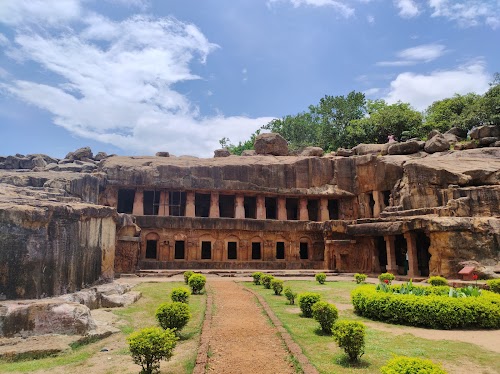
Udayagiri and Khandagiri Caves
Bhubaneswar, India
- Admire the detailed carvings of Ananta Gumpha
- Discover the historical inscription at Hathi Gumpha
- Explore the intricate carvings and sculptures of Rani Gumpha
- Walk around the hills to get amazing views
Known for:
Description:
The Udayagiri and Khandagiri Caves, located in Bhubaneswar, India, are a mesmerizing complex of ancient rock-cut caves. These partially natural and partially artificial caves are of archaeological, historical and religious importance. Udayagiri, meaning "Sunrise Hill," houses 18 caves, while Khandagiri, "Broken Hill," has 15. Many of the caves feature intricate carvings and sculptures, showcasing Jain artistry and beliefs. Notable caves in Udayagiri include the Rani Gumpha (Queen's Cave), a double-storied masterpiece, and the Hathi Gumpha (Elephant Cave), known for its inscription of King Kharavela's reign. Khandagiri's Ananta Gumpha, with its carved figures of women and elephants, is another highlight. Exploring these caves offers a glimpse into ancient Jain monastic life and the rich history of the region.
History:
The Udayagiri and Khandagiri Caves date back to the 2nd century BCE, built during the reign of King Kharavela of the Mahameghavahana dynasty. These caves served as residential and meditative spaces for Jain monks. The Hathigumpha inscription in Udayagiri, written in Brahmi script, provides valuable insights into King Kharavela's reign and military achievements. The caves showcase a blend of Jain and Hindu influences, reflecting the religious landscape of the time. Over the centuries, these caves have witnessed the rise and fall of empires, remaining as silent witnesses to the passage of time. Their historical significance and architectural beauty continue to attract visitors and scholars alike, preserving a tangible link to India's rich past.